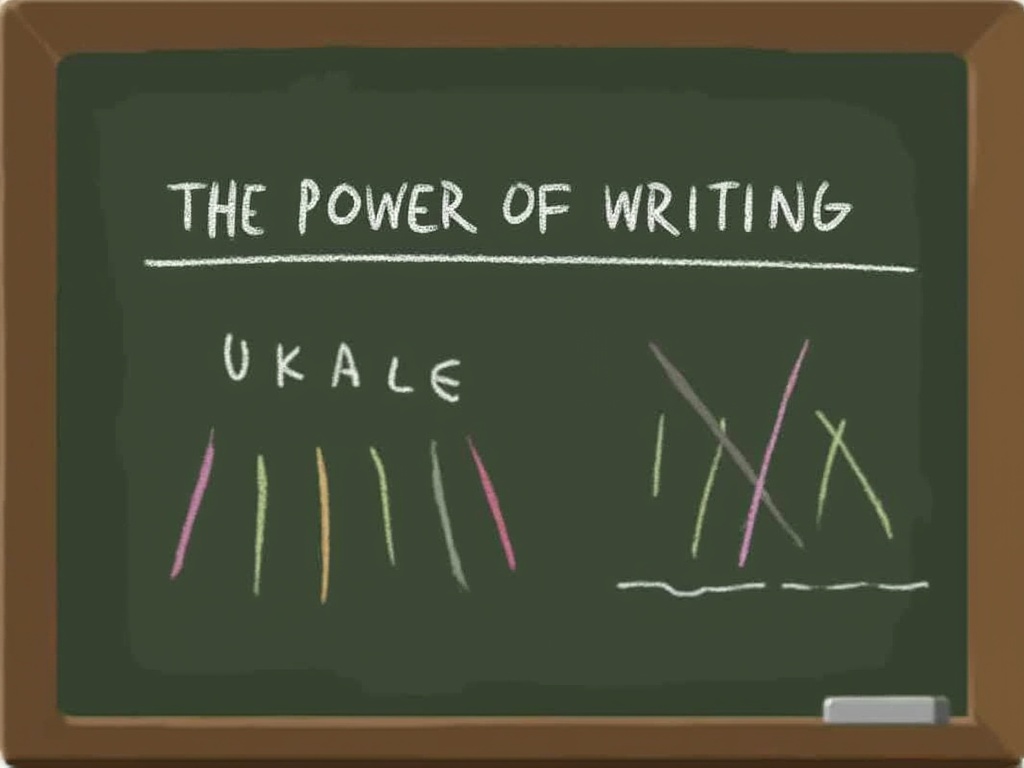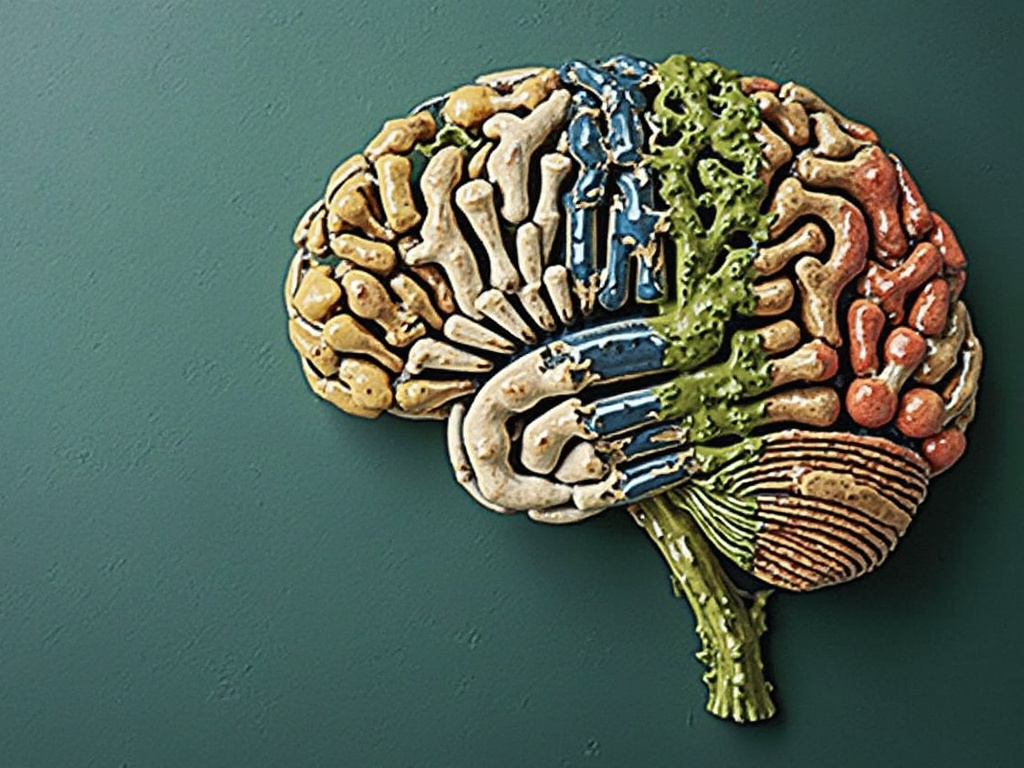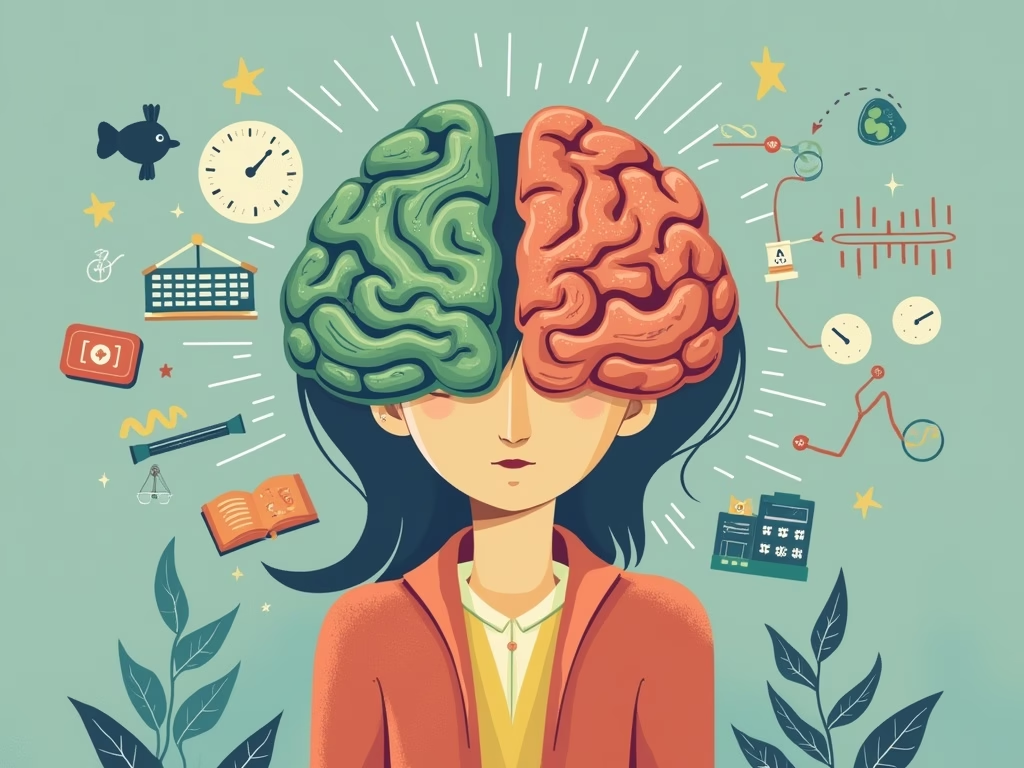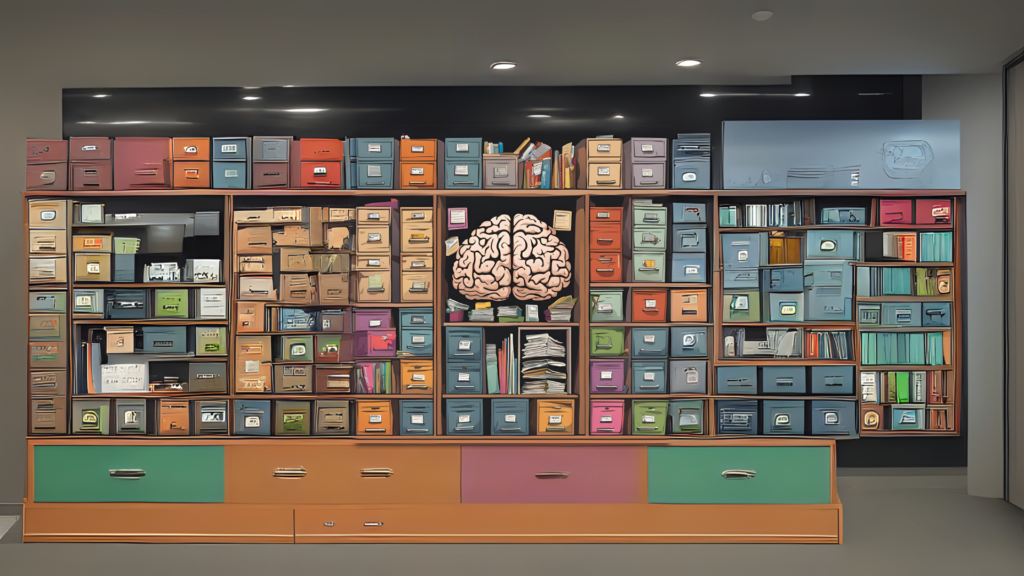Mastering memory isn’t just about natural ability; it’s about applying strategies that world memory champions rely on to boost recall and retention. Memory Techniques like the memory palace and focus bursts can enhance both the efficiency and effectiveness of remembering information.
Key Takeaways
- The Memory Palace technique creatively uses familiar spaces to form vivid mental images, which systemizes organization and speeds up information retrieval.
- Breaking information into manageable chunks aids retention. This method simplifies complex data and sharpens cognitive focus.
- Mnemonic devices, like acronyms and rhymes, inject a playful approach that effectively encodes information into long-term memory.
- Writing information down and speaking it aloud significantly boosts memory retention. These methods foster active engagement and promote deeper processing.
- Tactics such as spaced repetition, engaging in aerobic exercise, and practicing stress-reduction methods like meditation and mindfulness play integral roles in enhancing memory over time.
#1 The Memory Palace Technique: Visualizing Information
The Memory Palace technique, also known as the ‘method of loci,’ stands as a cornerstone strategy for those eager to boost their memorization skills. Imagine you’re embarking on a journey through a familiar space—perhaps your childhood home or the route to your favorite coffee shop. Now, let’s delve into how you can effectively employ this technique to enhance memory retention.
Steps to Build Your Memory Palace
- Select a Familiar Location: Choose a place you know intimately, such as your home or workplace. Imagine every detail vividly.
- Familiar locations enable your mind to navigate through them easily, making the technique more effective.
- Identify Key Spots: Identify specific locations or “loci” within this space. Think about distinctive features or landmarks within your chosen place.
- Associating information with these loci helps you anchor and retrieve details faster.
- Create Vivid Images: Link the information you want to remember with a strong, vivid mental image at each key spot.
- Visualizing striking and unusual images enhances recall by triggering emotional and cognitive responses.
Applying the Technique
Essentially, you’re constructing an imaginative walk through this space, associating each piece of information with a specific site. For instance, if you’re memorizing a speech, place each section at different locations along your pathway. Research underscores this technique’s efficacy; a study revealed that those who practiced the method of loci more than doubled their initial memory capabilities over just 40 days.
The beauty of the Memory Palace is its versatility and scalability. Whether you’re remembering a grocery list or preparing for an exam, this method organizes information systematically, making retrieval almost intuitive. Each mental walk-through reinforces the connections between your memory and mental landscape, leading to impressive gains in retention and recall. Embrace this technique, and you may just find your memory champions in ways you never thought possible.
#2 Chunking and Organizing Information for Better Recall
Mastering memory is all about strategy, and chunking leads the parade. Breaking down large information sets into manageable groups not only makes them easier to remember but also sharpens focus on essential elements. Let me guide you through some practical tips for employing these techniques.
Benefits of Chunking and Organizing
- Logical Grouping: When I group vocabulary words by categories like household items or animals, it helps cement these words in memory because they create a natural link in my mind. Grouping adds context that bolsters recall.
- Enhanced Focus: As I organize information into a detailed outline, I highlight important concepts, creating a cognitive map that guides me back when retrieving memories. This structured framework helps me focus on what’s truly significant.
- Simplifying Complex Data: Trying to remember a list of numbers? I divide them into smaller groups, enhancing retention by reducing cognitive load. This narrowing down approach turns an overwhelming list into digestible bites, kind of like breaking a marathon into manageable sprints.
If you want to use this method, start by dividing large sets of data into smaller groups based on their categories or functions. This is a practical way to not just store information but to retrieve it efficiently. By integrating these techniques into your routine, you’ll find recalling information becomes a much simpler task.
Incorporating associations and visual cues into your memory-boosting techniques can dramatically enhance your recall capabilities. This is particularly effective for those who think visually, as forming vivid mental images can create strong links between new information and what’s already known. Let me break down how this works and how you can implement these techniques into your daily practices effectively.
#3 Creating Associations and Visual Cues
Meld New Information with Existing Knowledge
- Relate Information to Personal Experiences: Align new data with things you already know personally. This personal connection makes the information stick more effectively.
- Create Mnemonic Devices: Use acronyms or phrases to connect new facts with familiar concepts. These can be humorous or quirky, anything that makes the information pop in your mind.
By establishing these solid links, you align the unfamiliar with the familiar, enabling your mind to navigate through your memory with greater ease and speed.
Enhance Memory with Visual Cues
- Picture Stories: Turn sequences of information into a visual story in your mind. See yourself interacting with this information in a setting or narrative that makes sense to you.
- Mind Maps: These visual tools allow you to organize information hierarchically, linking new ideas to central concepts via branching visuals.
Visual cues greatly bolster spatial memory, a crucial tool for presenters who rely on visuals as prompts. Imagine delivering a presentation; visualizing charts, graphs, or images related to your talk can guide your memory effortlessly through each point. These visuals act like beacons steering your recollection process, making it almost second nature to retrieve the necessary information right when you need it.
I come back to the essence of using associations and visual cues: they don’t just make remembering easier—they transform it into a vivid experience. Your brain, much like a sponge, recognizes patterns and imagery, leading to memory recall that’s quicker and more precise. Whether you’re a student, professional, or anyone aiming to optimize memory, these strategies are game-changers.
#4 Mnemonic Devices for Long-Term Memorization
Mnemonic devices are playful and effective techniques designed to enhance memory retention. They come in several forms, each providing a unique strategy to encode information into your long-term memory.
One popular method involves acronyms, where you form a word from the initial letters of a set of items you wish to remember. For instance, to memorize the order of operations in mathematics (Parentheses, Exponents, Multiplication, Division, Addition, Subtraction), you can use the acronym PEMDAS, sometimes remembered with the phrase “Please Excuse My Dear Aunt Sally”.
Acrostics work similarly but utilize full sentences where each word starts with the initial letter of the term you need to remember. A classic example is “Every Good Boy Deserves Fun” to memorize the lines of the treble clef: E, G, B, D, F.
Rhymes also play a crucial role in mnemonic devices. A familiar one is the catchy jingle, “In 1492, Columbus sailed the ocean blue,” that helps keep that pivotal historical date fresh in your mind. The rhythm and predictability of rhymes make them a fun way to cement information.
A more visual approach to mnemonics is the memory palace technique. This strategy involves imagining a detailed and well-established location like your home. You mentally place objects or ideas you want to memorize in specific locations within this imagined space. Each room or segment of the palace is associated with a particular item, allowing you to “walk through” and recall information by visualizing your journey. This method is beloved by memory champions worldwide for its effectiveness and creativity.
When trying to memorize specific information, get creative with crafting your acronyms or rhymes. Engage your imagination; the more vivid and personal the mnemonic, the better it sticks. With these techniques, you’ll find yourself recalling information with ease.
#5 The Power of Writing It Down

I’ve found that putting pen to paper really energizes the learning process. Writing information by hand outshines typing when it comes to memory retention. There’s something about the physical act that involves more selectivity and concentration on essential details. This isn’t just anecdotal; research by Mueller and Oppenheimer in their “The Pen Is Mightier Than the Keyboard” study supports this. Their findings demonstrate that students who took notes by hand performed better on recall tests than those who typed, highlighting the deeper processing taking place in the brain.
When writing, choose the key points that matter most. This necessity for selectivity means you’re engaging more critically with the material. It forces concentration, enhancing your retention in a way typing doesn’t. Here are a couple of reasons to consider grabbing that notebook:
- Enhanced Focus: Writing requires selecting key points, promoting engagement and concentration.
- Improved Recall: Handwritten notes aid in better retrieval of information over time.
So, keep a notebook handy for your studies, crucial meetings, or whenever you need to remember key information. Writing by hand can transform how effectively you recall details, moving your memory capabilities to championship levels.
#6 Enhancing Memory by Saying It Out Loud
Saying things out loud adds a powerful punch to your memory arsenal. It’s all about engaging multiple senses simultaneously—speaking and hearing. These actions together accelerate the transfer of information into long-term memory.
Consider this: by reading information out loud, you’re not just seeing the words, which involves visual memory, but you’re engaging in auditory learning too. This dual action takes advantage of what cognitive psychologists call the “production effect,” where speaking words aloud results in better memory retention compared to simply reading them silently.
- Engage Multiple Senses: By hearing yourself, your auditory senses join the party, enhancing the experience, which results in better memory retention. This technique leans on the concept of multisensory learning, which involves using more than one sense during the learning process.
- Create Unique Experiences: Each time you say something aloud, you create a distinct personal experience connected to that content, making the memory more vivid and easier to recall.
- Boost Engagement: The act of reading out loud demands cognitive attention and active processing, which keeps your mind alert and focused, reinforcing the learning process.
World Memory Champions often utilize this technique during preparation, reinforcing key information and ensuring it sticks. Multiple studies back this up, including research in the journal “Memory,” which highlights the significance of the production effect in memory enhancement. It’s simple, highly effective, and it turns passive reading into an active learning session. So the next time you want to remember something important, don’t just read it—say it out loud!
#7 Active Recall and the Use of Flashcards
Active recall has long been a trusted method for those wanting to boost their memory power. It revolves around repeatedly retrieving information from your memory bank rather than passively reviewing it. Flashcards, as I see it, are not just pieces of paper or digital cue cards but little powerhouses for boosting memory retention.
When you use flashcards, you’re actively engaging your mind. Take a topic you need to master, write a question on one side, and the answer on the flip side. Now, instead of just glossing over your notes, challenge yourself to recall the answer before you look. This active testing makes your brain work harder, effectively cementing the information.
Here’s the catch: this method doesn’t work with sporadic usage. You’ve got to integrate flashcards into your routine, testing your memory regularly. Make a stack for each subject or topic you’re learning. As you regularly practice with these flashcards, you’ll notice significant improvement in how quickly and accurately you can recall information.
Let me share a few tips to maximize your active recall using flashcards:
Tips for Flashcard Mastery
- Spaced Repetition: Space out your flashcard sessions over days or weeks instead of cramming. Studies by Ebbinghaus suggest spacing helps combat the “forgetting curve”.
- Shuffle Regularly: Shuffle the cards before each session to ensure you’re not just memorizing the order, but the content itself.
Flashcards truly encapsulate the essence of active recall, making them trusted allies in the journey to enhanced memory. Even if crammed schedules tempt you to skip sessions, remember: consistency is key.

#8 Implementing Spaced Repetition
Spaced repetition isn’t just a fancy term tossed around by memory champions—it’s a cornerstone of effective memorization. The concept is simple yet powerful: instead of cramming everything at once, you spread your study sessions over time, allowing the brain to rest and digest information in chunks. This technique capitalizes on the idea that reviewing information at progressively increasing intervals helps cement it in your long-term memory.
Here’s how to integrate spaced repetition into your learning routine:
Develop a Structured Schedule
- Create a Study Calendar: Jot down specific times for review sessions, gradually increasing the intervals.
- Use Reminders: Set alarms or use apps like Anki to prompt you when it’s time for a review, ensuring you never miss a session.
Utilize Technology
- Leverage Spaced Repetition Software: Programs such as Quizlet and SuperMemo allow you to input your study material and guide you through the review process.
- Track Progress: Monitor how well you’re retaining information and adjust intervals accordingly; some apps offer built-in analytics to assist with this.
According to the Harvard Business Review, spacing out learning sessions significantly enhances retention compared to studying the same content in a single sitting. This technique harnesses the power of the forgetting curve, encouraging you to dive back into content just as it’s about to fade from memory. Try implementing these practical tips and watch your memorization prowess increase exponentially.
#9 Exercise and Physical Health: Boosting Memory
The importance of regular aerobic exercise for a sharp memory can’t be overstated. Scientists have discovered that aerobic activities such as walking, swimming, or cycling can significantly enlarge the hippocampus, an area of the brain responsible for verbal memory and learning (American Academy of Neurology). When you engage in activities that get your heart pumping, you’re doing more than just improving your physical health—you’re giving your brain a major boost.
Benefits of Aerobic Exercise
- Enhances the Hippocampus: Aerobic exercises intensify the growth of new neurons in the hippocampus, thereby improving your capacity to memorize and recall information.
- Maintains a Healthy Weight: By keeping your weight in check, aerobic exercise indirectly supports brain health. Obesity can lead to memory impairments, so staying fit helps keep your mind agile.
- Reduces Stress: Exercise naturally lowers levels of the stress hormone cortisol, which can have detrimental effects on memory if present in high amounts. So, lacing up those sneakers doesn’t only calm your nerves but sharpens your brain.
- Improves Sleep: Consistent exercise encourages better sleep patterns. A well-rested mind processes information more effectively, enhancing your memory function.
Incorporating Aerobic Exercise into Your Routine
Introducing aerobic activities into your daily life is easier than you might think. Aim for at least 150 minutes of moderate-intensity aerobic exercise each week, as recommended by health professionals. You could start small with daily brisk walks or integrate cycling into your commute. Find activities you enjoy to ensure you keep it up consistently—consistency is key.
Integrating these exercises seamlessly into your daily routine not only bolsters your mental prowess but also lays the groundwork for lasting brain health. So, let the fresh air invigorate your body and your mind. Happy exercising!
#10 Reducing Stress and Improving Sleep for Memory
Meditation and mindfulness are not just buzzwords; they are powerful techniques that bring about genuine change, especially when it comes to boosting your memory. Stress and restless nights do more than just make you feel drained—they also mess with your ability to remember daily events, known as episodic memory. By embracing meditation and mindfulness, you can fend off stress and improve your sleep quality, both vital for clear and sharp memories.
Practicing Meditation for Stress Relief
- Focused Breathing: Techniques like deep breathing encourage your body to relax, thereby reducing stress. It acts as a natural reset for your brain.
- Guided Meditation: Several apps offer guided sessions to help you enter a calmer state of mind, which over time, positively impacts your memory retention. These sessions often range from just a few minutes to deeper dives of 30 minutes or more.
By practicing meditation regularly, you don’t just combat stress; you also enhance the connections in your brain that support memory processes. Studies by Mindfulness Research Center highlight how mindful breathing can help recall episodic memories.
Mindfulness for Better Sleep

- Mindful Journaling: Before bedtime, jotting down your thoughts can act as a mental cleanse, minimizing restless thoughts that disturb sleep.
- Body Scanning Exercises: By systematically observing different parts of your body, you release tension, allowing for better relaxation and deeper sleep.
The benefits of a mindfulness routine extend beyond sleep to significantly reduce stress. Calm minds make sharper memories. Research from Harvard University suggests that just eight weeks of mindfulness meditation can significantly improve focus and memory.
#11 Supporting Memory with a Balanced Diet
A well-rounded diet can significantly enhance memory retention, and world memory champions understand the value of what they consume. Just like athletes, those aiming for mental peak performance need the right fuel to support their brain power. Consuming healthy fats, natural sugars, and limiting the intake of saturated fats, refined sugars, and alcohol are critical elements in maintaining a sharp mind.
Key Dietary Components for Memory Enhancement

- Healthy Fats: Incorporate sources like avocados, nuts, and fatty fish. These are rich in Omega-3 fatty acids, essential for maintaining brain health and cognitive function.
- Natural Sugars: Opt for fruits and vegetables which provide the necessary glucose to fuel brain activity without the crash that comes with refined sugars.
- Saturated Fats Limitation: Reduce intake of red meat and butter. Excessive consumption of these can lead to cognitive decline over time.
- Refined Sugars and Alcohol: Moderation is key. High levels of refined sugars and frequent alcohol consumption can impair memory and slow down brain processes.
Incorporating these dietary habits isn’t about strict dieting or deprivation but embracing a lifestyle that nourishes your brain and your body. For champions, this approach to eating isn’t a chore; it’s an essential pillar of their cognitive success. Fuel your mind the right way, and watch your memory sharpen and expand.
#12 Focus Bursts and Avoiding Distractions in Study Sessions
To truly optimize your memory during study sessions, incorporating short, focused intervals—often referred to as “focus bursts”—can greatly enhance retention. This method has been validated by numerous world memory champions who attest to its efficacy.
Maximizing Focus with the Pomodoro Technique
One popular method is the Pomodoro Technique, which involves studying for 25 minutes followed by a 5-minute break. This cycle helps maintain concentration and prevents the mental fatigue that can diminish focus over time.
- Set a Timer for 25 Minutes: Engage deeply with your material during this interval and avoid multitasking.
- Take a 5-Minute Break: Step away from your study environment to reset your mind and return rejuvenated for the next session.
Research from the University of Illinois suggests that taking short breaks can improve overall attention University of Illinois.
Minimizing Distractions
During these bursts, it’s essential to minimize potential distractions to enhance focus. Consider these strategies:
- Silent or Airplane Mode on Devices: Reducing notifications prevents unnecessary interruptions.
- Noise-Cancelling Headphones or Earplugs: Drown out ambient noise, allowing you to concentrate fully on your task.
- Dedicated Study Space: Choose an area primarily used for studying, reducing the likelihood of distractions from daily life.
By effectively utilizing focused bursts and mitigating distractions, you’re not just making these methods a part of a productive routine but also paving the way for improved memory retention and academic success.
Let me know which techniques proves to be most effective for you!
Let me know in comments if you want to know more about techniques which improves your mental effectiveness.
If you are interested in learning more about Memory and Learning, please visit our blog.



